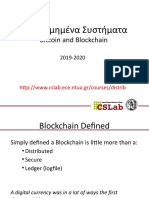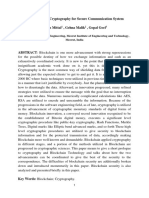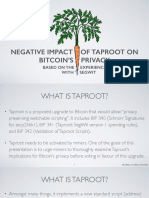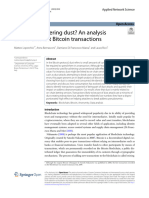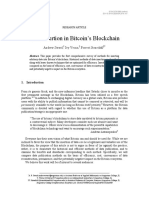0% found this document useful (0 votes)
65 views16 pagesUnit 2 Bitcoin - Intro
The document provides an overview of Bitcoin, its definition, historical context, and its role as the first decentralized digital currency. It discusses Bitcoin's protocol, transaction process, and the double spending problem, along with regulatory aspects and its price volatility. Additionally, it compares Bitcoin with alternative coins and outlines the attributes and steps involved in Bitcoin transactions.
Uploaded by
venkat MohanCopyright
© © All Rights Reserved
We take content rights seriously. If you suspect this is your content, claim it here.
Available Formats
Download as PPTX, PDF, TXT or read online on Scribd
0% found this document useful (0 votes)
65 views16 pagesUnit 2 Bitcoin - Intro
The document provides an overview of Bitcoin, its definition, historical context, and its role as the first decentralized digital currency. It discusses Bitcoin's protocol, transaction process, and the double spending problem, along with regulatory aspects and its price volatility. Additionally, it compares Bitcoin with alternative coins and outlines the attributes and steps involved in Bitcoin transactions.
Uploaded by
venkat MohanCopyright
© © All Rights Reserved
We take content rights seriously. If you suspect this is your content, claim it here.
Available Formats
Download as PPTX, PDF, TXT or read online on Scribd
/ 16





































